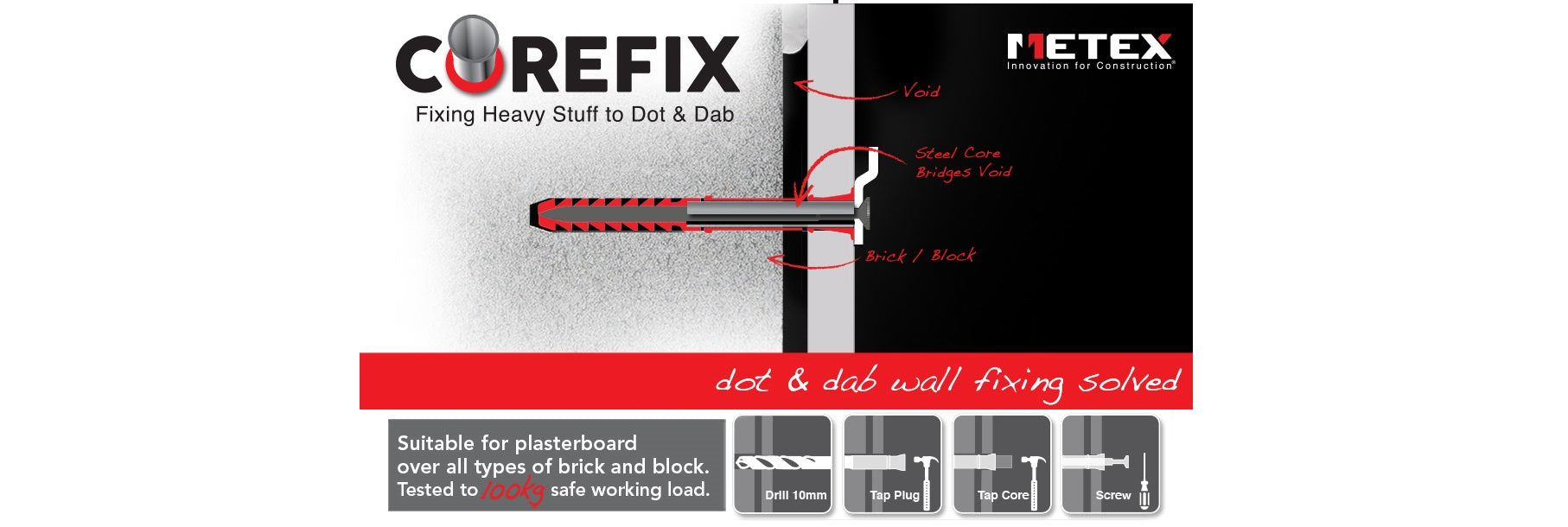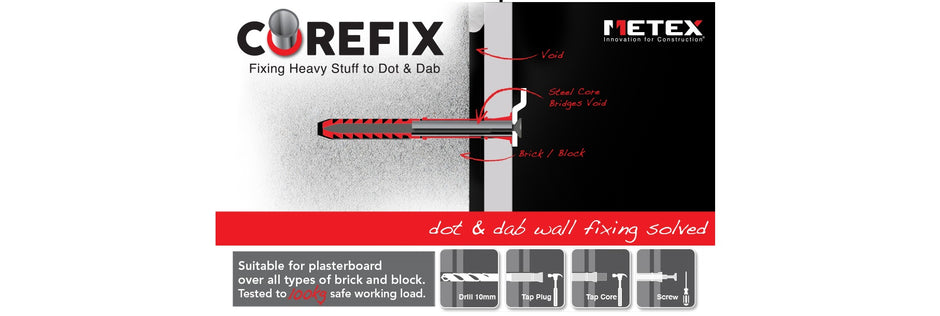Best fixings for plasterboard
So, you’re looking to create wonderful, bespoke interiors but are unsure of the type of fixing to use for hanging your favourite decoration item or other heavy appliances. Wall fixing, normally referred to as plasterboard or drywall fixings, is crucial to attach heavy objects on walls like TV, radiators, showers, and other heavy items to plasterboard or drywall.
Hollow plasterboard or dry-board, being too brittle, can’t hold screws alone, so make sure you pair screws with the right type of fixings. Also, avoid using nails on plaster walls because they’re likely to cause the drywall to crack. Screws with fixings let you hang heavy objects because they fasten well into the lath behind the drywall.
Anyhow, plasterboard fixing suitable to put up a shelf may not work well for hanging mirrors or pictures. The weight-carrying capacity of fixings varies with the type and brand. So, it would help if you chose the fixing, keeping in view the requirements of the situation. But with so many types and brands out there in the market, DIY enthusiasts are often overwhelmed to choose the best fixings.
But don’t worry! Here’s a detailed guide about plasterboard fixings – what to use and what not to use.
Plasterboard fixings and drywall fixings
Here’re different types of plasterboard wall anchors you can use for your DIY venture:
Hollow Wall Anchors or Rosett Cavity Fixings
Hollow wall anchors are used individually for fixing such things on the wall that creates a pulling effect. Featuring a toggle above and the spring below, the screw pushes the anchor's body, creating a grip. First, you need to drill a hole in the board, and after that, you will push the anchor in the wall. After that, you have to turn the screw to pull the board, creating a grip on the back of the plasterboard.
Hollow wall or cavity fixings are ideal for fixing objects to plasterboard walls that need strong bracing. The anchor part of the hollow wall is made of metal and is not in a triangular shape, as is the case with plastic toggle fixings.
Nylon toggle or plastic toggle fixings
With a plastic toggle fixing, you push the fixing into a pre-drilled hole, and the triangle part will collapse. Once the fixing is in the hole, the triangular part bounces back, fixing the toggle in place. Now you can screw through the toggle into the plasterboard. As you turn the screw, the triangle will be drawn up, creating a robust fix. Nylon or plastic toggle fixings are ideal for hanging heavy loads but be sure to insert them at the top of the object.
Self-drive wall fixings
Whether you’re looking to fix photo frames or kitchen units in plasterboard walls, self-drive or Redidrive fixings are best in the business. They’re easy to fix and are the strongest of all plasterboard fixings. To use self-drive wall fixing, you need to drill a pilot hole of 2 or 3 mm to set the slot. The pointed bottom of the red drive casing is pushed into the pilot hole. Now you can turn the screws to fix anything you want to the wall.
Universal RawlPlugs
Being lighter and flimsy, Universal plugs are not a preferred choice for hanging heavy objects to plasterboard. But you can use these plugs to hold lighter objects. The use is pretty simple. You have to pre-drill the hole matching the size of the wall plug. Insert the plug into the hole and turn the screw to fix or hang objects.
Rubber anchor nut
If you’ve got some irregular hole and want to fix a fair bit of weight, the rubber anchor nut is the best all-rounder. It is pretty easy to use; you just have to hammer it in and add a screw to hang. The metal thread inside the rubber guides the screw. Rubber anchor nut works best in areas where corrosion is a concern.
Butterfly toggles
With a metal toggle, these fixings can take heavy loads. They work in the same manner as plastic toggles or wall anchors but are sturdy and in different shapes. The metal toggle grips the plasterboard with butterfly fixings when the screw is inserted, making a solid brace.
Corefix fixing
Corefix fixings are strong and provide effective support for the things you fix. They don’t need extra sort, and you can even support the boiler without worrying.
Should I use wall plugs or plasterboard wall anchors?
Many homeowners are confused about whether to use wall plugs or plasterboard anchors to fix plasterboard walls. There’re varieties of wall-fixings available in the market, but wall plugs might not be the best choice. They do expand as you screw them into the wall, but as the plasterboard is soft, they widen the plug hole.
In contrast, plasterboard fixings have a unique thread design that ensures optimum fixing and fast initial grab. You can buy fixings with adjustable screw depth to match the requirement of plasterboard depth.
How much weight can you hang?
Although all plasterboard fixings claim to have high holding power and grip, some say 5kg or others says 50kg. Anyhow, you can distribute the weight of the items or devices over a larger area so, if you’re wondering if plasterboards can hold heavy things. The simple answer would be “yes”, but only if you properly distribute the load and use the right type of fixings.
TV on a plasterboard wall
The fixings and anchors enhance the holding capacity of screws. You can also fix a TV on a plasterboard wall with a suitable choice of plasterboard fixings. You can also attach things like a plant pot stand, a ceiling fan, picture frames, kitchen items, or any other medium-sized decoration item.
The bottom Line
When you go to the DIY store to purchase some plasterboard fixings, you can get a little dizzy from all the choices. You can use any fixing types like Redidrive, Plastic Toggle, hollow wall, or butterfly toggle. But be sure to pick the fixings that go well with the requirements of the plasterboard and the item you’re going to hang



